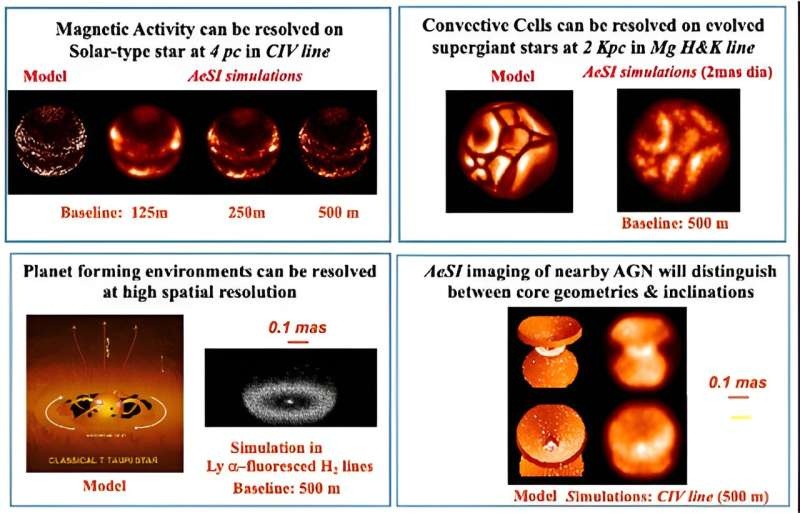Discover how the upcoming Artemis missions could enable the construction of a groundbreaking lunar interferometer, the Artemis-enabled Stellar Imager (AeSI), which promises to revolutionize our understanding of the universe with unprecedented high-resolution observations.

Scaling the height of astrophysics
Artemis-enabled Stellar Imager (AeSI) is a visionary mission concept that capitalizes on leveraging forthcoming Artemis infrastructure and assets for lunar surface science. The ambitious project will be devoted to building a large, sparse aperture observatory (interferometer) on the lunar surface.
AeSI will use the singular nature of the lunar environment to produce images far more detailed than earlier, traditional ground-based telescopes in UV and optical wavelengths. Its powerful resolution up to 200 times that of the Hubble Space Telescope will be obtained by combining light from several telescope elements into what is called a “space interferometer”.
This paradigm-shifting technology serves the potential to change our perception of numerous astrophysical phenomena and provide an insight into various issues ranging from stellar processes, e.g. surface and internal structures of far away stars through exoplanet studies complementary for investigating their habitability in exoplanets orbiting those distant stars. The scalability of the project could make it feasible to grow the number of elements in the observatory to 30 or more a development that will further sharpen its scientific edge.
Overcoming Lunar Challenges
Different challenges of building a large-scale observatory on the lunar surface were meticulously mapped out by the researchers behind AeSI. Their list of factors include, lunar dust, seismic activity and the requirement of robotic assistants.
Nevertheless, the team is convinced their project possible for just received a nod from NASA in the form of a Phase 1 study to be conducted under its Innovative Advanced Concepts (NIAC) program. With a less than 4% success rate in the same highly competitive program, this underscores the promising potential of AeSI.
The current grant funds a Phase 1 study to develop and refine the concept so we can prepare for future phases. If the experiment proves successful, then the hope for researchers is to gain funding and resources to continue with phase two: constructing and deploying the AeSI observatory on the Moon.
Conclusion
Here, we present the Artemis-enabled Stellar Imager (AeSI) a bold vision in astrophysics. This project will leverage the Artemis missions’ infrastructure and resources to expand our investigation of the universe from detailed studies of faraway stars to potential life on exoplanets. AeSI, owing to its unparalleled high-resolution capabilities and scalability in design could be the game changer in the field of Astronomy & unlock mysteries of cosmic wonders that engulf us.
